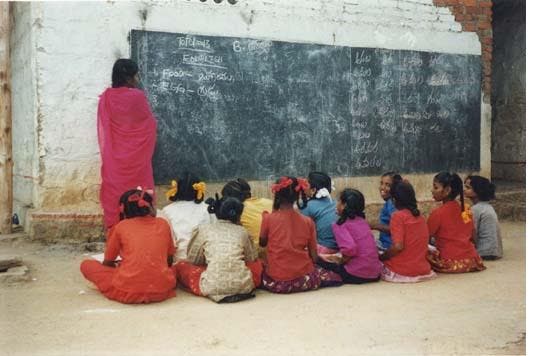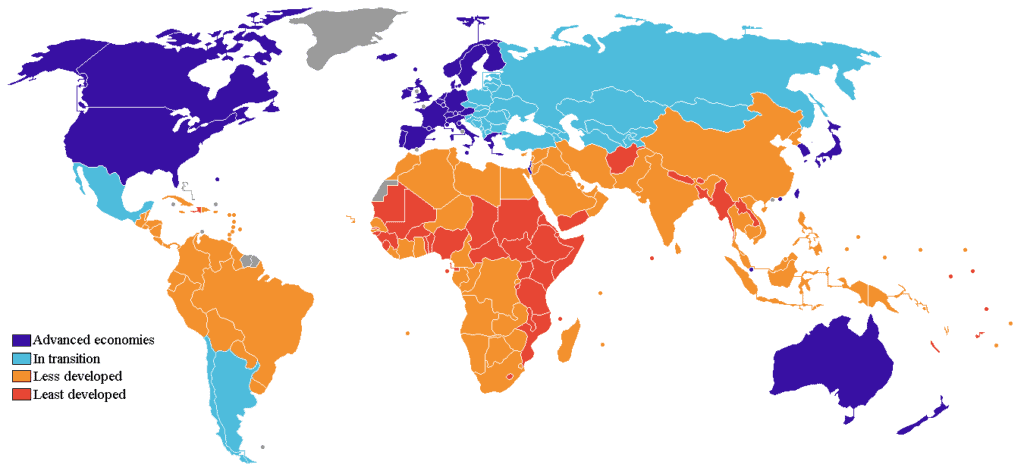Our best bet to feed the populations of the future without sacrificing the planet’s biodiversity, a team of authors reported this week in the journal Science, lies with the ladies. Specifically, by improving women’s access to education, reproductive health services, and contraceptive technologies, an unsustainable population boom might be nipped in the bud.

Image credits Tony.saji / Wikimedia.
The paper starts by looking at the interplay between rising human populations and the dramatic decrease in other species or their total populations. Between 1970 and 2010 (less than two human generations) the world lost more than half its wild animals, according to a World Wildlife Fund report — totaling an estimated 39 percent of terrestrial wildlife, 39 percent of marine wildlife, and 76 percent of freshwater wildlife. So what does it all come down to?
“It’s the food. Follow the food and then you’ll know why the planet’s diversity of life is in trouble,” said Eileen Crist, an associate professor of science and technology in society in Virginia Tech’s College of Liberal Arts and Human Sciences and the lead author of the review paper.
“We’re causing a mass extinction, and agriculture is arguably the primary driver of those losses.”
And with populations set to boom around the world, the strain on the environment is only going to get worse. High-income countries, which account for a disproportionate use of resources, are more likely to have stable or even declining populations. But low-income countries have growing populations. The UN claims that we’ll go from today’s 7.5 billion to more than 9 billion by mid-century and 11 billion by the end of the century. Couple with economic growth, the most numerous generation of humans in history will consume more meat and other resources; inevitably, they will put immense pressure on the planet’s already dwindling biosphere. All things considered, we’ll need to double of even triple our agricultural output by the end of the century to feed everyone, the authors point out.
“But we’ve already taken up the most lush, arable land for cultivation, and we’ve squeezed wild nature into increasingly narrow pockets around the world,” Crist adds.
“How can we make more food without destroying more nature?”

Image credits Sbw01f / Wikimedia.
One solution is what agricultural experts call “sustainable intensification,” the pursuit of increased food production without breaking new ground for agriculture or otherwise impacting the environment. But the team says this approach isn’t enough on its own — we also need to work on lowering demand. They conclude that reaching a sustainable society which can equitably provide for while protecting the biosphere will require concentrated effort to stabilize and eventually lower the global population — without them, “nature will continue to take the fall,” Crist says.
Break the cycle
Ok, pause for a second. There are probably some who are getting a Malthusian, a la cycle of misery vibe here — I can’t blame you. The paper’s subject does, in many respects, overlap with those penned by Malthus. Which did, admittedly, have horrific repercussions on the world. Basically, in a way they’ve reached the same conclusion as Malthus — we need to be fewer “people” — but through a very different approach, which is why I decided to write about the findings in the first place.
The authors believe talks on policy directly regarding population levels have been muted in the past few decades in part because of discomfort around global imbalances — but today, they say, excessive consumption is no longer limited to the developed world, so we need to have this talk. The global middle class of 3.2 billion in 2016 is expected to rise to roughly 5 billion by 2030, they write. Some 40% of India’s population is predicted to join the ranks of the middle class by the middle of the 21st century, adding almost half a billion consumers to the global economy — up from 50 million in 2006 — from one nation alone.
“A key solution to unsustainable population growth is the empowerment of women,” Crist said. “By enhancing their human rights, giving them and their partners access to reproductive health services and contraceptive technologies, and improving their educational attainment, we can help address this planetary crisis.”
“Wherever women are empowered educationally, culturally, economically, politically, and legally, fertility rates fall,” the authors write. “Populations tend to move toward states of zero or negative growth when women achieve equal standing with men, as long as family planning services and contraceptives are readily available.”
There are many factors that drive a nation’s natality rate, but one of the strongest is women’s education levels and access to family planning options — which usually lowers this rate as women forgo their traditionally appointed roles and take more control over their lives. Daniel Callahan talked about this link (and the issue of overpopulation at large) in his book The Five Horsemen of the Modern World. I recommend you give it a read if it ever falls into your hand.
And I’m all for that solution. Let’s face it, for the most part of history women have been handed the short end of the stick. Most of you reading this probably come from developed or the better parts of developing countries, so you are (hopefully) aware of how the bits fit together and can decide for yourself if you want to be a mother or not — but for most women on the planet, that’s only a dream. Even if it doesn’t work and we don’t get to become sustainable, I still think it’s a change for the good.
“The human population is not the only variable stressing Earth,” the authors conclude. “But it is a powerful force that is also eminently amenable to change, if the international political will can be mustered.”
The full paper “The interaction of human population, food production, and biodiversity protection” has been published in the journal Science.






